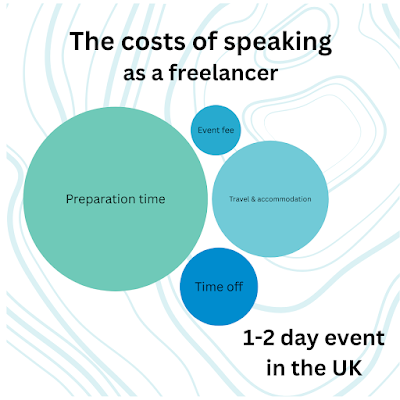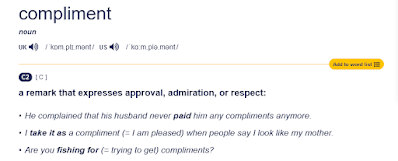The AS Hornby Dictionary Research Awards (
ASHDRA) are
entering their fifth year in 2024. As new batches of dictionary-related
research proposals come in each year, new issues crop up for us to discuss on
the ASHDRA panel. I’ve previously written about over-ambitious dictionary
development projects
here.
Recently, we met up ahead of the 2024 call for proposals
going out at the start of February and one of the talking points that came out
of last year’s submissions was the question of what constitutes ‘research’.
We welcome any research angle that relates to dictionaries in
English language teaching. One popular theme, though, involves developing new
lexicographic resources in some form, especially to target the needs of a
particular group of learners who are currently under-served. Targeting a need
is a valid aim for a piece of research, but in some cases, we found that
proposals were really materials development projects rather than research, i.e.
the applicant had essentially already decided what kind of resource they wanted
to create and just wanted funding to develop it. And that’s just not what the awards are about.
So, what do we mean by ‘research’? According to the call for
proposals, we define research as “original investigation undertaken in order to
gain and extend knowledge and understanding” – but what does that look like in
practice?
Researching the need:
Many applicants already have a clear idea of what gap they
think needs to be filled, often based on their own teaching experience. That
makes a great starting point, but is it enough? Could you find out more about exactly
what issues your learners have with existing dictionary resources? Are they
actually turning to dictionaries at all or just googling their language
queries? What kinds of things do they find problematic? What would they find
more helpful?
Is your planned resource going to target learners exactly
like your own students (same age, same level, same educational context, same L1/country/culture)
or do you want to appeal to a wider audience? If so, how much do you know about
the needs of that wider group of learners? If, for example, you work mainly in
university-level EAP, you may be used to higher-level learners or those who are
majoring in English, so are linguistically-minded and motivated. They will have
a very different profile (and needs and skills) from the average high-school student
who may not be interested in language at all and just wants quick fixes to get
them through. Can you approach other teachers to draw on their experiences?
By investigating these kinds of questions (through
questionnaires, interviews, focus groups or activities to find out about
dictionary usage behaviours and needs), you might find that some of your
initial intuitions were correct, but you might also turn up things you hadn’t
considered and that might significantly shape what you do next.
Also, before you jump in feet first, have you thoroughly
investigated what other published resources are available? Does the resource
you’re planning actually already exist or perhaps, something similar to it?
There’s no point in reinventing the wheel when you could learn from others.
Make sure you thoroughly research and review what’s already available. Even if what
you find isn’t exactly right for your target group, there may be elements you
can draw on, especially if you don’t have past lexicography experience.
⚠️
A word of warning here: although it’s helpful to draw on
already published dictionaries for inspiration; for style, layout, what
information to include, etc.:
- Remember that published dictionaries are subject to
copyright so while they can provide a helpful guide, you shouldn’t just copy
definitions for your own use without permission.
-
Make sure you draw on a relevant resource for your audience.
Don’t imitate the style of definitions from a reference dictionary aimed at L1
speakers of English, especially not a dictionary of record such as the OED or
Merriam-Webster, if you’re writing for EFL.
Research during your initial design phase:
Developing any dictionary-style resource will likely involve
some form of corpus research – investigating the meaning and usage of lexical
items, sourcing authentic example sentences – these things are a
lexicographer’s bread and butter.
But will you be using corpus tools in a novel way to research
the language going into your dictionary entries? Will you build your own
corpus, perhaps in a specialized area? Maybe, like previous ASHDRA researcher,
Chinh Ngan Nguyen Le, you’ll use a novel approach to analysis. She used
collocation searches to establish the key senses of polysemous semi-technical
medical terms and used the results to create visual representations of each
term.
When you’ve created your first few draft entries, you could
get some informal pre-trial feedback, perhaps from a handful of colleagues. Is
there anything they think you’ve missed out? Anything that’s unclear or
potentially confusing? You could design up a couple of different entry layouts
to find out which format they prefer. It’s easier to iron out any problems
early on before you’ve done too much work.
(Action) Research and development:
Once you have a set of draft entries, then an action
research approach works well in this context to trial your material.
That might involve recruiting groups of learners (your
target end users) or it might be more appropriate for teachers to trial the
resource in the classroom.
One of the keys to effective trialling is making sure you’re
going to get enough detailed feedback that you can then act on to improve on
your first draft. A handful of general feedback questions might just elicit
rather vague, polite responses and give you little to work with. It’s important
to design your trial carefully, to think about how to collect feedback and also
make sure you leave enough time for it. Again, you could use questionnaires,
interviews or focus groups. If your materials are being trialled in class, is
it possible to observe or video the lesson to see for yourself not just how the
students react to the materials, but also how the teachers make use of them? In
one recent ASHDRA project, for example, the researcher found that despite training
sessions with teachers ahead of the trail, in practice, the teachers tended to
revert to their familiar teaching style and didn’t fully make use of the new
resource as planned.
Once you’ve got your feedback and used it to redesign and
improve your resource – or possibly any accompanying teacher’s guide - then you ideally need to go through the same process again. A
second trial will tell you whether you’ve managed to get your resource spot-on
or whether there’s still some tweaking needed.
Where your main research elements come will, of course, come
down to the exact nature of your project, but the key thing to bear in mind is
that just putting your existing ideas into practice doesn’t constitute research
on its own. You need to investigate something and to come up with results and findings
at the end of the process. And remember, it’s often the things that didn’t work
that tell us more than those that went smoothly.
Labels: ASHDRA, dictionaries, research








.png)




